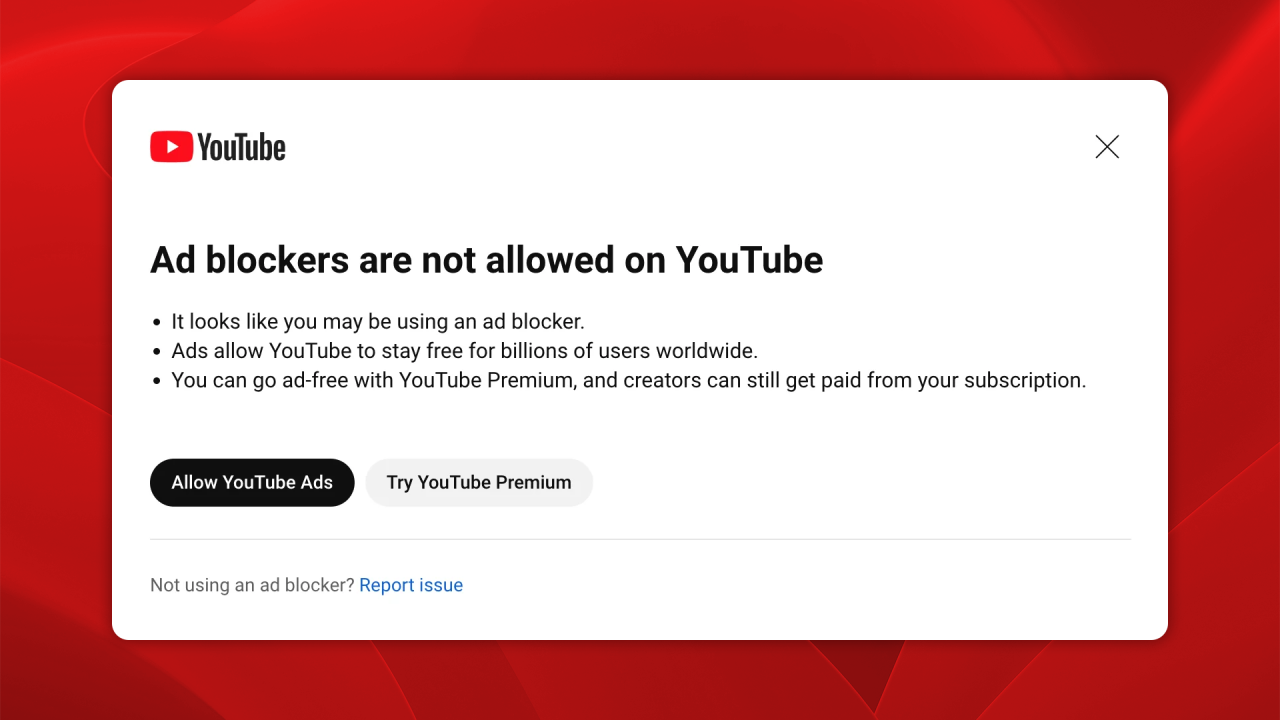YouTube’s fight against Ad Blockers
If you spend time on YouTube, you are likely familiar with ads. Why do they exist? How can you stop them? Should you stop them? As our viewing habits change, the economy around what we watch continues to evolve.

Many internet users use extensions to block ads, cookies, and other methods websites use to commodify and track audiences. Extensions like AdBlock are great tools to limit the dystopian feeling of being online. However, some websites only see profit from ads.
If you do have an ad blocker you may notice some sites ask you to disable it to view their content. With smaller sites that only gain revenue from ads, this is understandable. If you do care about a particular website or creator, disabling ad block and even watching their ads all the way through can help them make money. However, seeing five ads on one YouTube video gets pretty discouraging, especially when most big creators also have in-video sponsorships. Creators need to take these sponsorships despite the ads YouTube places on their videos because they don’t get paid enough from AdSense, YouTube’s way of paying creators for putting ads on their videos.
YouTube never banned ad blockers until very recently. While researching this topic I learned that YouTube was testing out banning ad blockers in specific regions and felt relieved that I was still able to use mine. However, when I went to watch a video in between writing this I was stopped by a message stating that YouTube doesn’t allow ad blockers, pushing me to subscribe to YouTube premium instead and stating that it would help to pay creators.
Finding a balance
Now, I understand needing to be paid for creating content. I would happily watch ads on my favourite creators’ videos if I knew that they were being paid enough by AdSense. However, creators only make between three to five dollars for every thousand views their videos get. This forces creators to accept sponsorships to make a living, meaning that viewers have to watch the ads that YouTube plays before, during, and after videos as well as the in-video sponsorships made by the creator. Finding content online that doesn’t constantly try to commodify its audience is impossible.
It’s a difficult and nuanced conversation around ads and paying for content. The creators need to be paid. The people behind YouTube need to be paid. We don’t want to have to pay for content, so ads have to exist. Except no one wants to watch them, and when we do, the creators don’t make enough for having them on their videos. Former YouTube CEO Susan Wojcicki’s monthly salary was estimated to be just under $400,000. Many creators I watch who have a relatively large following still make less than a thousand dollars a month in AdSense, with the bigger creators making around six thousand. The disparity between these incomes is why viewers don’t want to watch ads. In order to justify the amount of advertising on the platform the actual creators need to be paid more.
Alternative platforms for creators
Websites like Patreon and Ko-fi are alternative platforms that allow you to pay creators directly. There are no ads and the money given to creators is a much higher percentage because of this. If you’re willing to spend an extra dollar a month to directly support a creator and not have to sit through ads, I recommend it.
Leave a Comment